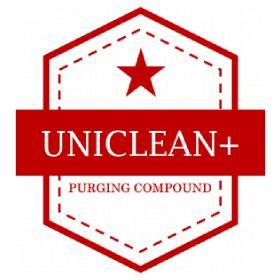Selecting the Ideal Purging Material: A Guide for Manufacturers

In the world of manufacturing, efficiency is key. Whether you're producing plastics or rubber, minimising downtime and maximising productivity are constant goals. One crucial aspect of achieving these goals is the proper selection of Purging Materials. Purging Compounds help to clean machinery during colour or material changes, preventing contamination and reducing waste. However, with various options available, choosing the ideal Purging Material can be daunting. This guide aims to simplify the process, offering insights and considerations for manufacturers looking to optimise their purging procedures using ideal Purging Material.
Understanding the Importance of Purging Materials:
Purging Materials play a vital role in maintaining production efficiency and product quality. Without proper purging, residues from previous runs can contaminate new materials, leading to defects, downtime, and increased waste. By effectively cleaning machinery between colour or material changes, Purging Compounds helps manufacturers maintain consistency in their products while minimising production interruptions.
Factors to Consider When Selecting Purging Materials:
Several factors influence the selection of a Purging Compound, including the type of machinery, the materials being processed, and the specific requirements of the production process. Additionally, considerations such as temperature stability, compatibility with additives, and environmental impact should also be taken into account. Understanding these factors allows manufacturers to choose Purging Compounds that are best suited to their unique needs and challenges.
Types of Purging Materials:
Purging Materials come in various forms, including mechanical purges, chemical purges, and hybrid purges. Mechanical purges rely on the abrasive action of scrubbing agents to remove residues, while chemical purges use reactive compounds to dissolve contaminants. Hybrid purges combine the benefits of both mechanical and chemical purging, offering a comprehensive solution for stubborn residues and complex machinery.
Evaluating Compatibility and Effectiveness:
Before selecting a Purging Material, manufacturers should consider its compatibility with their equipment and materials. Conducting trials and tests can help determine the effectiveness of a Purging Compound in specific applications. Additionally, factors such as ease of use, odour, and residue-free properties should also be evaluated to ensure seamless integration into the production process.
Implementing Best Practices for Purging:
Once the ideal Purging Material has been selected, implementing best practices is essential for maximising its effectiveness. This includes following manufacturer guidelines for dosing and application, as well as establishing regular purging routines to prevent buildup and contamination. Training operators on proper purging techniques can also enhance efficiency.
About the author
Selecting the ideal Purging Compound is a critical decision for manufacturers seeking to optimise their production processes. By understanding the importance of purging, considering relevant factors, and evaluating different types of Purging Materials, manufacturers can choose Purging Material from UNICLEANPLUS that meets their specific needs and challenges. Implementing best practices for purging ensures smooth operations, minimising downtime and waste while maintaining product quality and consistency. They offer free samples so that you can use them before placing a bulk order to judge their efficiency. Call them at +91 9021232809 to request free samples or place a bulk order.
Comments